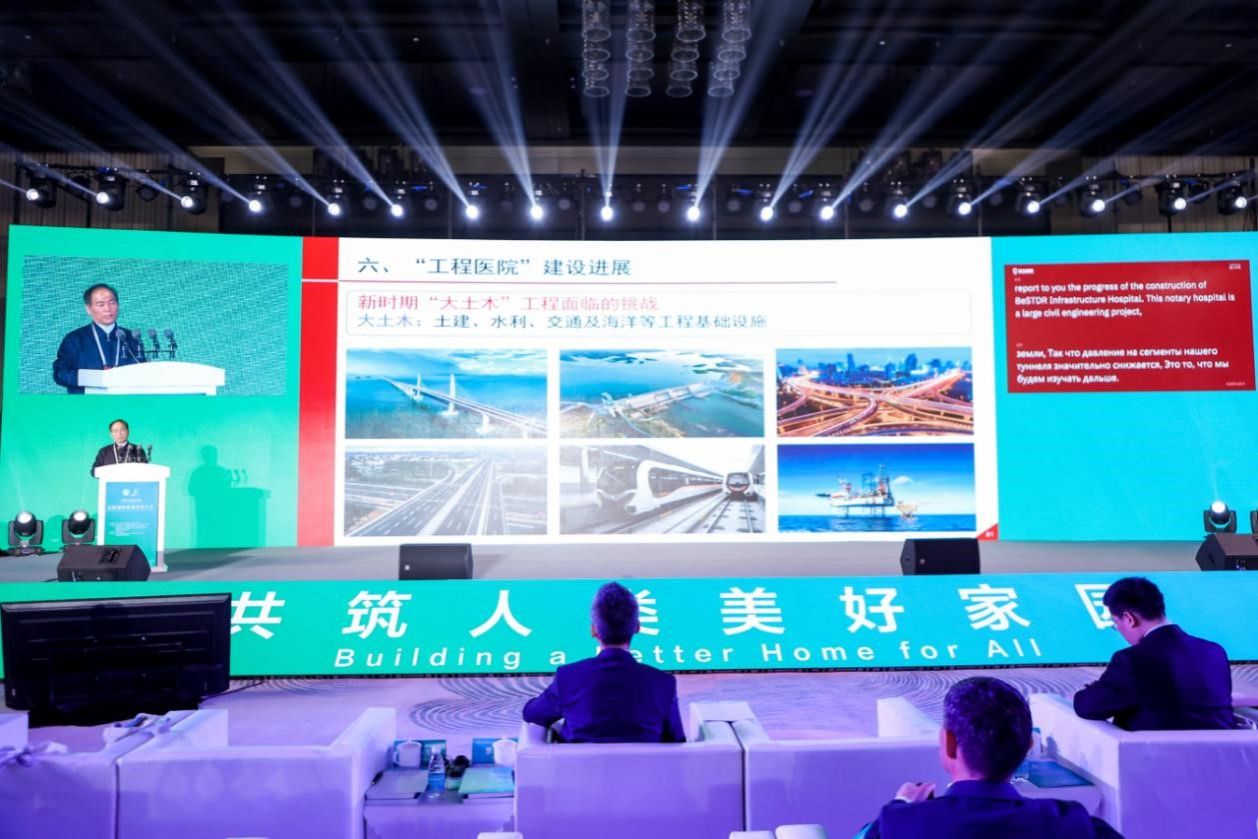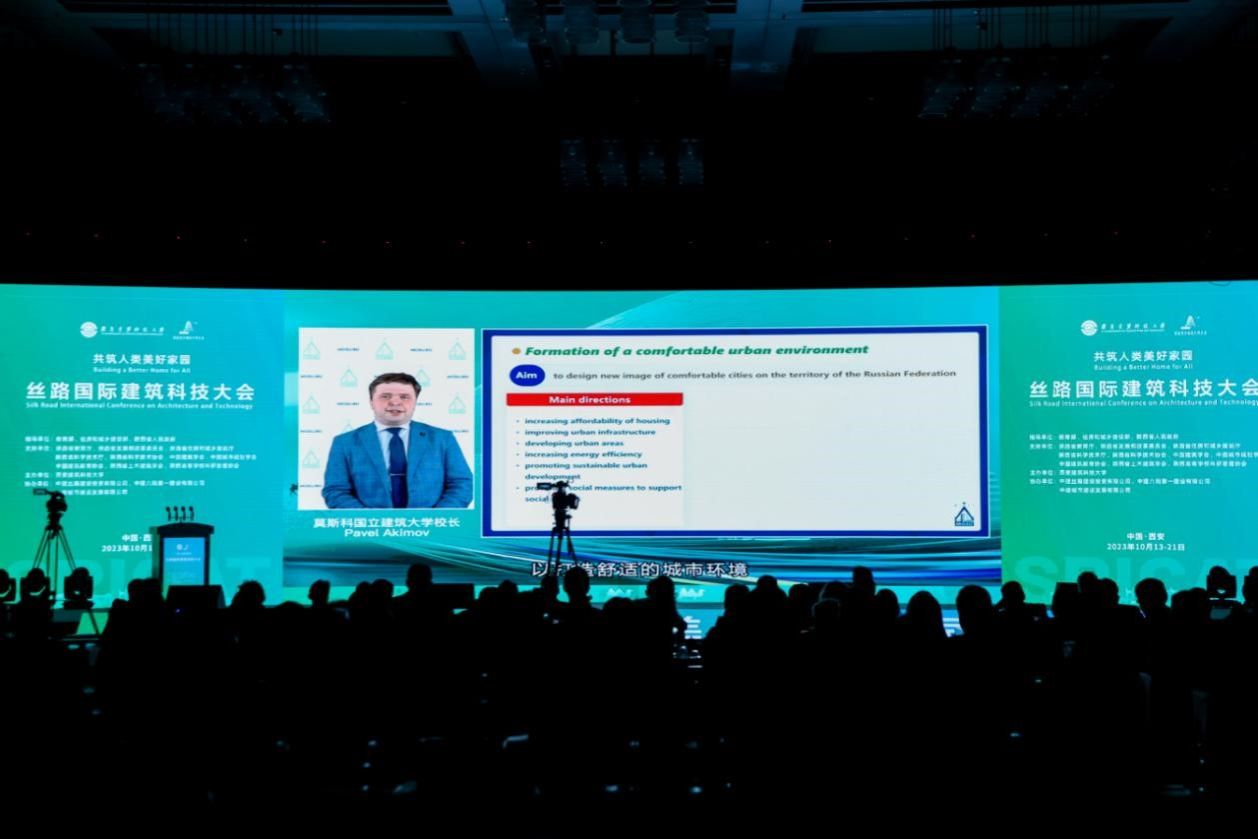

During the conference, representatives of XAUAT and Alliance’s overseas member institutions pressed their respective school emblems together. President Zhao announced the establishment of the “Alliance” and conferred the plaques to member institutions.

As one of the significant achievements of the Silk Road International Conference on Architecture and Technology, a Report on the Development of Silk Road International Architecture and Technology and a Report on the Green Development of Urban Human Settlements Along the Silk Road in Western China were released. These two reports were jointly compiled by the Silk Road International Research Center of Architectural Technology at XAUAT and the team led by Academician Liu Jiaping. These are research outcomes with extensive data collection and analysis. The reports provide insights into architectural technology development in countries along the Silk Road and the characteristics and experiences of green development in urban living environments in western China. Academicians Wang Xiaodong and Liu Jiaping and President Zhao unveiled the two reports together.

The conference also hosted the Institute of Future Industrial Innovation in Intelligent Construction unveiling ceremony, jointly established by XAUAT and Silk Road Construction Investment Group (SRCIG) of China State Construction Engineering Group Co., Ltd. (CSCEC). Its purpose is to strengthen cooperation between academia and industry and promote green building development and intelligent construction. Yao Kuanyi, Deputy Secretary of the CPC Party Committee and Secretary of the Discipline Inspection Commission of SRCIG, and Wang Yi, XAUAT’s Vice President, unveiled the plaque for the Institute.


Following the opening ceremony, the conference opened its main forum. Academician Wang Fuming, CAE Academician, President of Bestdr Infrastructure Hospital, and Director of Huanghe Laboratory (Henan), delivered a keynote speech titled Development of flooding disaster prevention and control technology in underground engineering and construction progress of Engineering Hospital. Professor Liu Jiaping, CAE Academician, Director of the State Key Laboratory of High-Performance Civil Engineering Materials, and Professor at Southeast University, presented a keynote speech titled New Developments in Research and Application of Civil Engineering Materials. Academician Pavel Alekseevich Akimo, Acting Vice President of the Russian Academy of Architecture and Construction Sciences (RAASN) and Rector of Moscow State University of Civil Engineering (Russia), discussed Contemporary trends in sustainable urban development in Russia. Professor Ivo Čolak, Vice-Rector of the University of Mostar in Bosnia and Herzegovina, shared his keynote speech titled Urban Development of the City Driven by the Development of the University of Mostar.

During the keynote speech session held in the afternoon of the same day, Professor Zhao Xiangmo, President of XAUAT; Professor Yu Dehu, President of Shandong University of Architecture; Professor Khalmuradov Rustam Ibragimovich, President of Samarkand State University in Uzbekistan; Professor Andrei A. Boika, Vice President of Sukhoi State Technical University of Gomel in Belarus; Professor Tsolmonbaatar Danjkhuu, Vice President of Mongolian University of Science and Technology; Zhao Yuanchao, National Master of Engineering Survey and Design and Chief Architect of China Northwest Architectural Design and Research Institute; and Professor Wang Xiaochang, Distinguished Fellow of the International Water Association (IWA) and professor of XAUAT delivered their respective reports.

In his keynote address titled The Exploration and Practice of Architectural sci-tech Talent Cultivation in the Vision of Building a Beautiful Home for Mankind, President Zhao emphasized that as the new wave of technological revolution and industrial transformation accelerates. Global challenges such as climate change become more prominent, and there is a growing need for a shift in talent cultivation of architectural technology to meet the demands of a diverse and changing world. Looking to the future, the focus and trend of reform in talent cultivation among architectural universities is to produce well-rounded, innovative, and globally aware architectural technology professionals with a deeper national identity. In recent years, XAUAT has been committed to achieving its “Double-First Class University Plan” goal with a philosophy grounded in academic excellence and service to the nation. The University has adopted a developmental strategy to strengthen the foundations, build collaborative networks, enhance innovation, and foster strong teams. This has led to significant advancement in academic disciplines and talent cultivation. In the new era, XAUAT is eager to deepen practical cooperation with universities of architectural technology along the Silk Road regarding joint research and talent development, faculty, and cultural exchange and contribute further to global innovation in architectural technology, the creation of better living environments, and the advancement of human civilization.
During the conference, XAUAT also held several sub-forums and special events, including the International Forum on Ecological Science and Engineering for Human Settlement in Response to Global Climate Change, the Silk Road International Forum for Arts and Design, the Forum on the Protection and Utilization of Major Heritage Sites and the Innovative Development of National Archaeological Parks, the Silk Road International Forum on Cooperation Among Architectural Universities, the Silk Road International Forum on Talent Development and Employment, as well as Centennial Anniversary of Architectural Program at Suzhou Technical Institute.